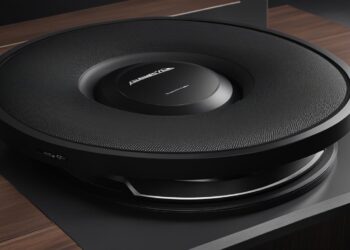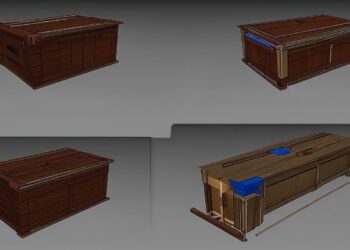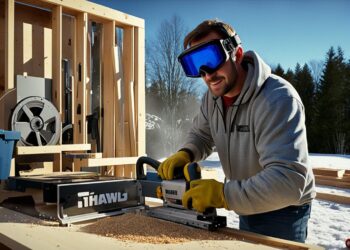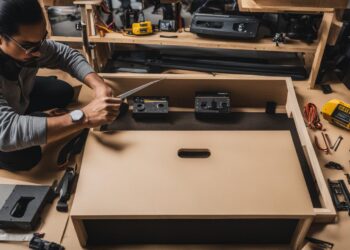Are you tired of lacking that deep bass experience while listening to your favorite music? Wondering how to enhance your audio system without breaking the bank? Look no further! In this article, I will show you a step-by-step process to build your own 15 inch subwoofer box and take your sound system to the next level. Whether you’re a DIY enthusiast or just someone who wants to customize their audio setup, this guide is for you.
Key Takeaways:
- Building your own subwoofer box can be a rewarding and cost-effective way to enhance your audio system.
- A step-by-step process will guide you through the construction of a custom 15 inch subwoofer box.
- Proper planning, material selection, and attention to detail are essential for optimal results.
- Considerations such as subwoofer size, box design, and construction techniques will impact the performance of your subwoofer box.
- Follow safety precautions and use appropriate protective gear throughout the construction process.
Planning and Designing Your Subwoofer Box
Before you begin building your subwoofer box, it’s important to plan and design the enclosure. Start by determining the dimensions of your box based on the manufacturer’s recommendations for your 15 inch subwoofer. Measure the depth, height, and width needed for the box. Sketch out the box design on paper, considering the available space in your vehicle and any additional features you want to incorporate, such as a grille or custom shape. Calculate the internal volume of the box to ensure it matches the manufacturer’s recommendations for optimal performance.
When designing your subwoofer box, there are a few key considerations to keep in mind. Firstly, the box should be built to the optimal size for your 15 inch subwoofer. This ensures that the speaker will operate efficiently and produce the desired sound quality. The optimal box size is determined by the manufacturer and can usually be found in the subwoofer’s specifications.
Another important aspect of subwoofer box design is the internal volume. This refers to the amount of space inside the box and is crucial for achieving the best possible bass response. A larger internal volume typically results in deeper bass, while a smaller volume can enhance the overall clarity and tightness of the sound.
In addition to size and volume, you may also want to consider the shape and construction of your subwoofer box. Some designs, such as ported or vented enclosures, can enhance low-frequency output by allowing the air to move more freely within the box. On the other hand, sealed enclosures provide tighter and more accurate bass reproduction. The choice of box type depends on your personal preferences and the specific characteristics of your subwoofer.
Once you have finalized the design and dimensions of your subwoofer box, you can proceed to gather the materials and tools needed for construction. In the next section, we will discuss the necessary components and provide a detailed list to help you get started.
Gathering Materials and Tools
When it comes to building a 15 inch subwoofer box, having the right materials and tools is essential for a successful construction. Here are the materials you will need:
| Materials | Tools |
|---|---|
| 3/4-inch medium density fiberboard (MDF) or plywood | Jigsaw |
| 2-inch drywall screws | Table saw or circular saw |
| Panhead sheet metal screws | Electric drill with appropriate bits |
| Carpenter’s glue | Silicon caulk |
| Non-hardening rope caulk | Speaker terminal cup |
Gather all these materials and make sure you have the necessary tools before you begin the construction process. Having everything at hand will help you work efficiently and complete the project smoothly.
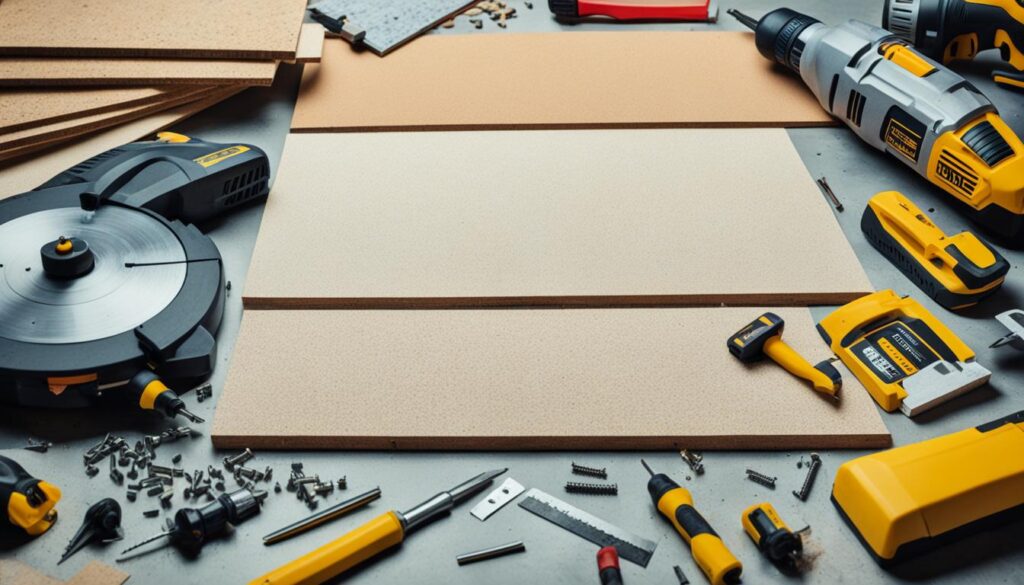
Planning Ahead
Before starting your subwoofer box construction, it’s a good idea to plan ahead by measuring the available space in your vehicle and considering any additional features you want to incorporate. By doing so, you can ensure that the materials you gather are well-suited to your specific design and installation requirements.
Step-by-Step Construction Process
Building your own custom subwoofer enclosure can be an exciting project that allows you to create the perfect box for your 15 inch subwoofer. By following a step-by-step process, you can ensure that the construction is done accurately and efficiently. Below are the detailed steps to guide you through the building process:
- Begin by cutting the pieces of Medium Density Fiberboard (MDF) or plywood to the specified dimensions. This will include the front baffle, back panel, bottom panel, side panels, and top panel.
- Use a router to perform edge profiling on all the cut pieces. This step is essential as it provides a smooth finish and allows for optimal airflow within the enclosure.
- Assemble the back, bottom, and one side panel of the box to verify the fit in your vehicle. This helps ensure that the enclosure will fit properly and align with your desired placement.
- Proceed with the rest of the assembly, securing the pieces together using carpenter’s glue and screws. Start by attaching the front baffle to the assembled panels, followed by the remaining side panels and the top panel.
- For a clean and visually appealing look, paint the front baffle and ported section of the enclosure. Choose a color that complements your vehicle’s interior or personal preference.
- Wrap the entire box in carpet using upholstery adhesive. This not only provides a secure and professional finish but also helps reduce vibrations and resonance.
- Install a metal mesh insert on the front baffle to protect the subwoofer cone from any potential damage. Additionally, add an SMD speaker terminal and any additional hardware desired.
- Connect the wiring according to your subwoofer’s specifications. Take care to ensure proper polarity and secure connections. Once the wiring is complete, install the 15 inch subwoofer into the box.
- Test the subwoofer box by playing music or test tones. Fine-tune the settings, such as volume and crossover frequency, to achieve optimal performance and desired sound quality.
By following these step-by-step instructions, you can successfully build your own custom subwoofer enclosure for your 15 inch subwoofer. Enjoy the deep, powerful bass that your newly constructed box will deliver!
Tips and Considerations
When building your 15 inch subwoofer box, consider the following tips and considerations for optimal results:
- Choose the right subwoofer for your desired sound and power requirements. Select a subwoofer that can handle the wattage of your amplifier and matches the acoustic needs of your audio system.
- Use double thickness MDF for the front panel or add bracing for added strength. This ensures the subwoofer box is sturdy and can withstand the intense vibrations produced by the subwoofer.
- Pre-drill screw holes to prevent splitting of the wood. This step helps maintain the integrity of the subwoofer box during assembly and prevents cracks or damage to the material.
- Ensure a tight and secure fit for the subwoofer to prevent air leaks. A well-fitted subwoofer ensures optimal sound performance and prevents any unwanted vibrations or rattling.
- Seal all edges and seams with carpenter’s glue, caulk, and rope caulk to maximize air pressure. This helps create an airtight enclosure, enhancing the low-frequency response and preventing any air leakage.
- Test the box’s fit in your vehicle before final assembly to avoid any issues. Ensure that the subwoofer box fits properly in the available space and doesn’t interfere with other components or structures in your vehicle.
- Follow safety precautions and use appropriate protective gear during construction. Wear safety glasses, gloves, and respiratory protection if necessary to protect yourself from any potential hazards.
By considering these tips and taking the necessary precautions, you can build a high-quality 15 inch subwoofer box that delivers powerful bass and enhances your audio experience.
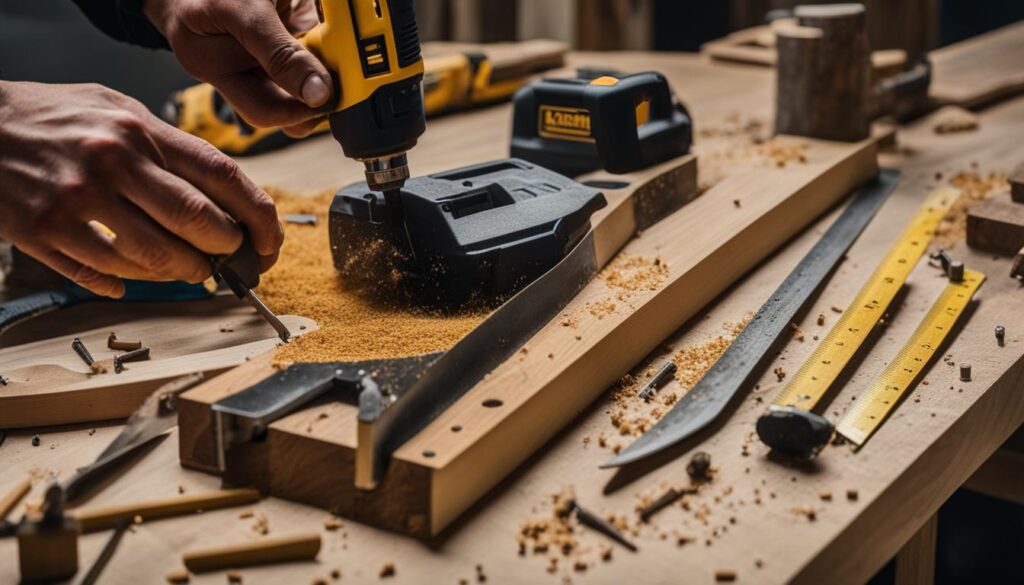
Finalizing the Subwoofer Box
Once you have completed the construction of your 15 inch subwoofer box, it’s time to add the final touches to give it a professional finish. These final touches will not only enhance the appearance of your custom subwoofer enclosure but also ensure optimal performance.
Apply a Protective Coating
One of the first final touches you can add is to apply a protective coating or clear coat to the painted surfaces of your subwoofer box. This will help protect the paint from scratches and fading, while also giving it a glossy finish.
Add Grille Cloth or Decorative Trim
To further enhance the aesthetics of your subwoofer box, consider adding grille cloth or a decorative trim to the front baffle. This can give your enclosure a polished look while also protecting the subwoofer from any accidental damage.
Label the Box
It’s always a good idea to label your subwoofer box with the subwoofer model and specifications. This will not only help you easily identify the box but also provide useful information for future reference.
Double-Check Connections and Wiring
Before finalizing your subwoofer box, take the time to double-check all the connections and wiring. Ensure that everything is properly connected and secure to avoid any issues or malfunctions.
Fine-Tune Subwoofer Settings
Once your subwoofer box is complete, it’s essential to fine-tune the subwoofer settings and crossover frequency for optimal sound quality. This will allow you to achieve the desired balance between low-end frequencies and the rest of your audio system.
With these final touches, your custom subwoofer enclosure will be ready to deliver deep, resonant bass and enhance your overall audio experience.
Conclusion
Building your own 15 inch subwoofer box is a rewarding and cost-effective project that allows you to customize your audio system’s bass performance to your liking. By carefully planning your design, gathering the right materials, and following a step-by-step construction process, you can create a custom enclosure that delivers deep, resonant bass.
Whether you are a DIY enthusiast or an audiophile seeking a unique solution, constructing your own subwoofer box empowers you with the flexibility to tailor the design according to your specific needs and preferences.
Use this comprehensive guide as a starting point to unlock the secrets of DIY audio and enjoy the immersive sound experience that a well-built subwoofer box can offer. With the right approach and a touch of creativity, you can create a subwoofer enclosure that not only enhances your audio system but also showcases your craftsmanship.
FAQ
How can I build my own 15 inch subwoofer box?
Building your own 15 inch subwoofer box is a rewarding and cost-effective project. By following a step-by-step process and using the right materials and tools, you can easily construct a custom subwoofer enclosure that fits your needs and delivers deep bass. Read on for a detailed guide on how to build a 15 inch subwoofer box.
What materials do I need for building a subwoofer box?
To build a 15 inch subwoofer box, you will need the following materials: 3/4-inch medium density fiberboard (MDF) or plywood, jigsaw, table saw or circular saw, electric drill with appropriate bits, 2-inch drywall screws, panhead sheet metal screws, carpenter’s glue, silicon caulk, non-hardening rope caulk, and a speaker terminal cup.
What are some tips for building a subwoofer box?
When building a subwoofer box, consider choosing the right subwoofer for your sound and power requirements, using double thickness MDF or adding bracing for added strength, pre-drilling screw holes to prevent splitting, ensuring a tight and secure fit for the subwoofer to prevent air leaks, sealing all edges and seams with glue and caulk to maximize air pressure, and testing the box’s fit in your vehicle before final assembly.
How do I finalize the subwoofer box?
To finalize your subwoofer box, consider applying a protective coating or clear coat to painted surfaces, adding grille cloth or a decorative trim to the front baffle, labeling the box with the subwoofer model and specifications, double-checking all connections and wiring, and fine-tuning the subwoofer settings and crossover frequency for optimal sound quality.
Why should I build my own subwoofer box?
Building your own subwoofer box allows you to customize the design to your specific needs and preferences. It can also be a cost-effective solution compared to purchasing a pre-built enclosure. Additionally, the process can be rewarding and educational for DIY enthusiasts and audiophiles who want a unique and tailored audio experience.






